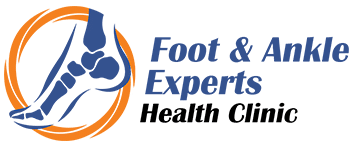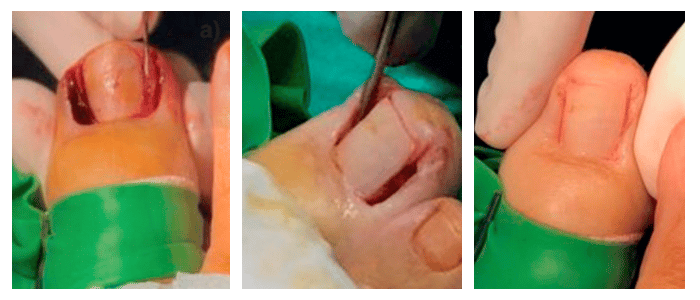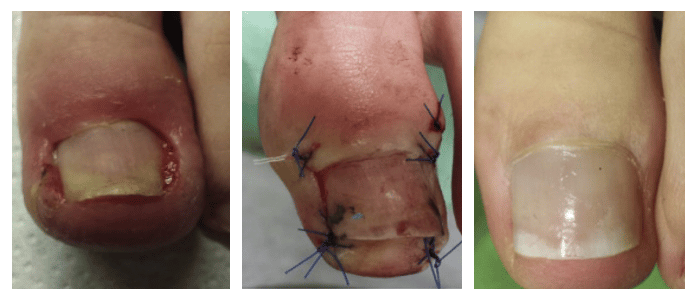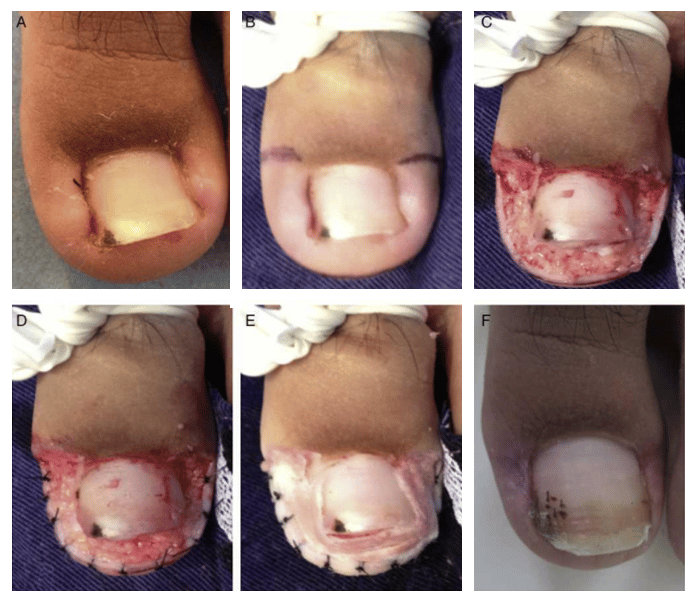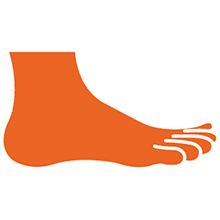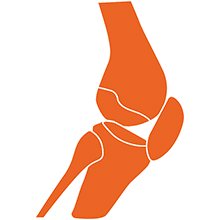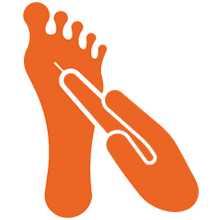The treatment process:
If you develop painful ingrown toenails. Here at Foot & Ankle Experts, we give patients 4 surgical options.
Surgical Procedure 1: Partially removing the nail
For more severe ingrown toenail (redness, pain, puss), Dr Kim can trim or remove the ingrown portion of the nail after numbing your toe by injecting local anesthetic in a painless way.
Surgical Procedure 2: Partial nail avulsion with phenol acid (PA) or Trichloroacetic acid (TCA).
Phenol acid cauterisation offers painless, quick recovery (1-2 days), cosmetically satisfying removal of partial toenail with a success rate of 80%.
Whereas, TCA cauterisation offers painless, moderate recovery rate (5-10days), cosmetically satisfying removal of partial toenail with a success rate of 98%.
Surgical Procedure 3: Modified Winograd procedure with Noel’s technique
In order to remove hypergranulated tissues, 4-5 stitches adhere to the excision site, perfect for complicated recurrent ingrown toenail with skin lesion.
This is a safe procedure even for paediatric patients to be performed under local anesthesia. We use absorbable stitches preventing further postoperative stitch removals. Cosmetically very satisfying with the least amount of discomfort involved. The dressing will be changed every three days with MLS post-op laser therapy to boost your painless fast healing recovery.
Surgical Procedure 4: Removing the nail and surrounding tissue permanently (Super U Procedure)
If you have the infection and toenail problem repeatedly after the above intervention, Dr Kim may suggest removing a portion of the nail along with the underlying tissue. Please note the procedure is very extensive and it is very unlikely to be the first or final choice of operations as it involves long recovery days. This procedure is only fit for patients with no systemic health risk or comorbidities and onychomycosis.
